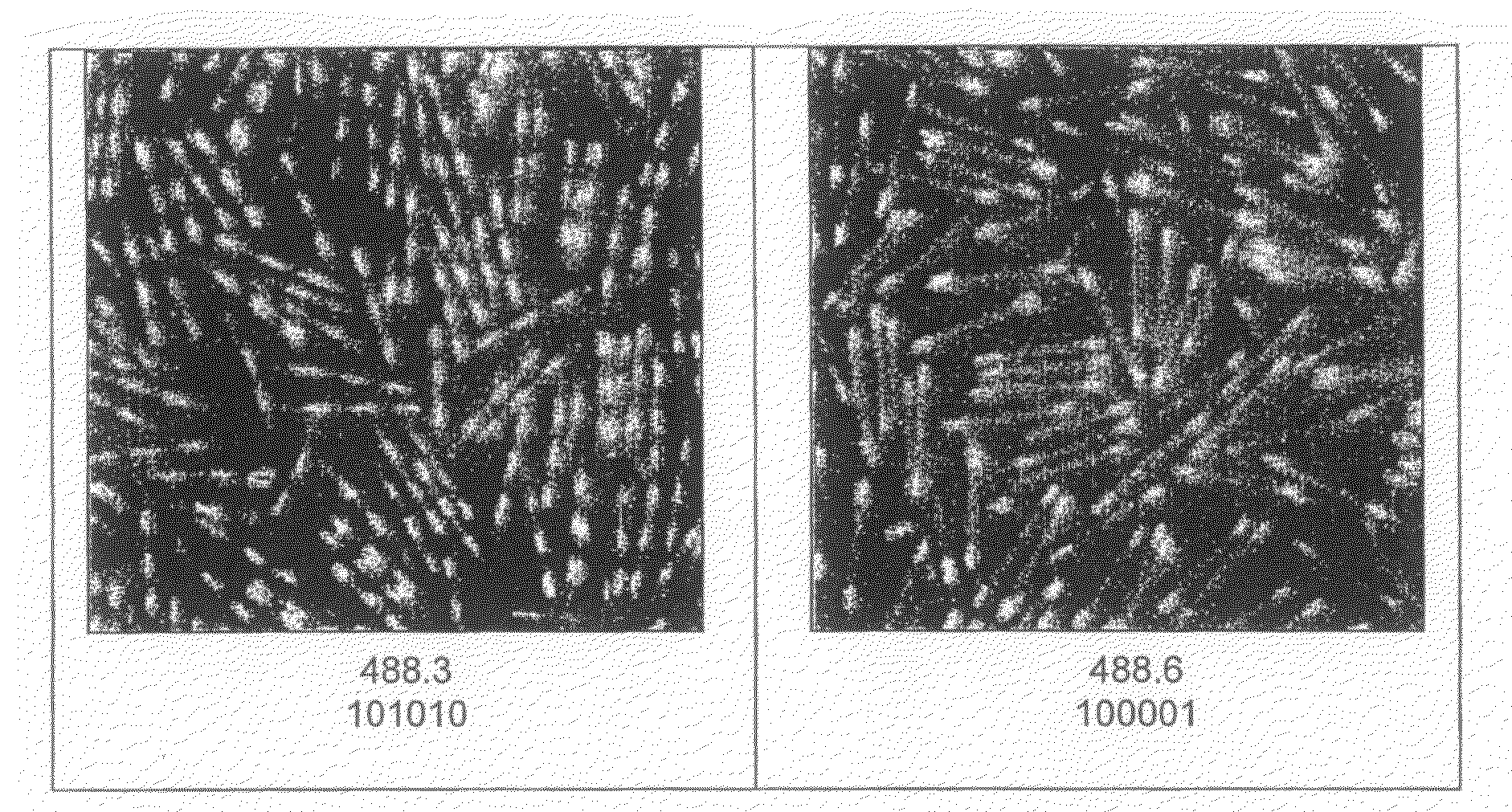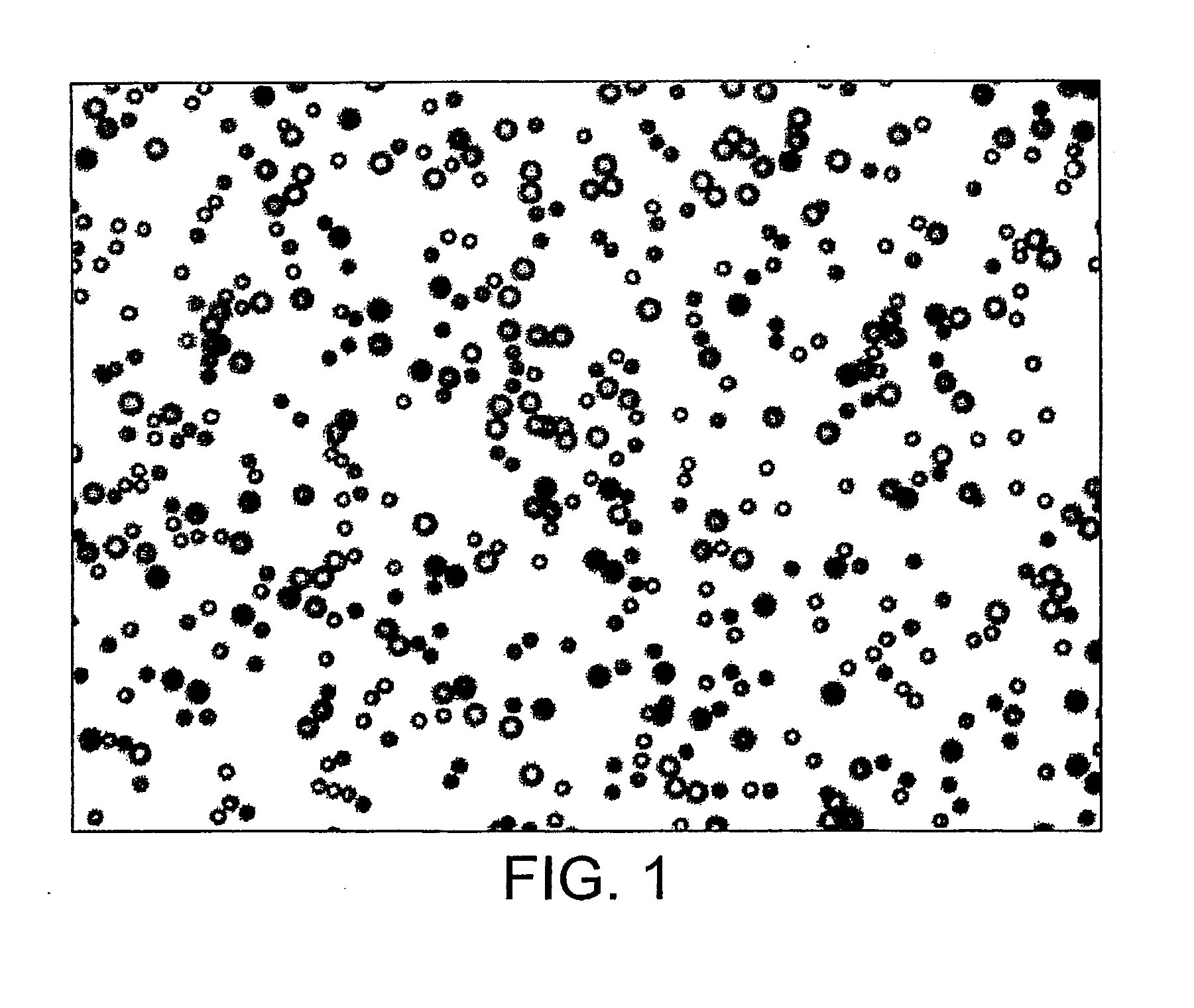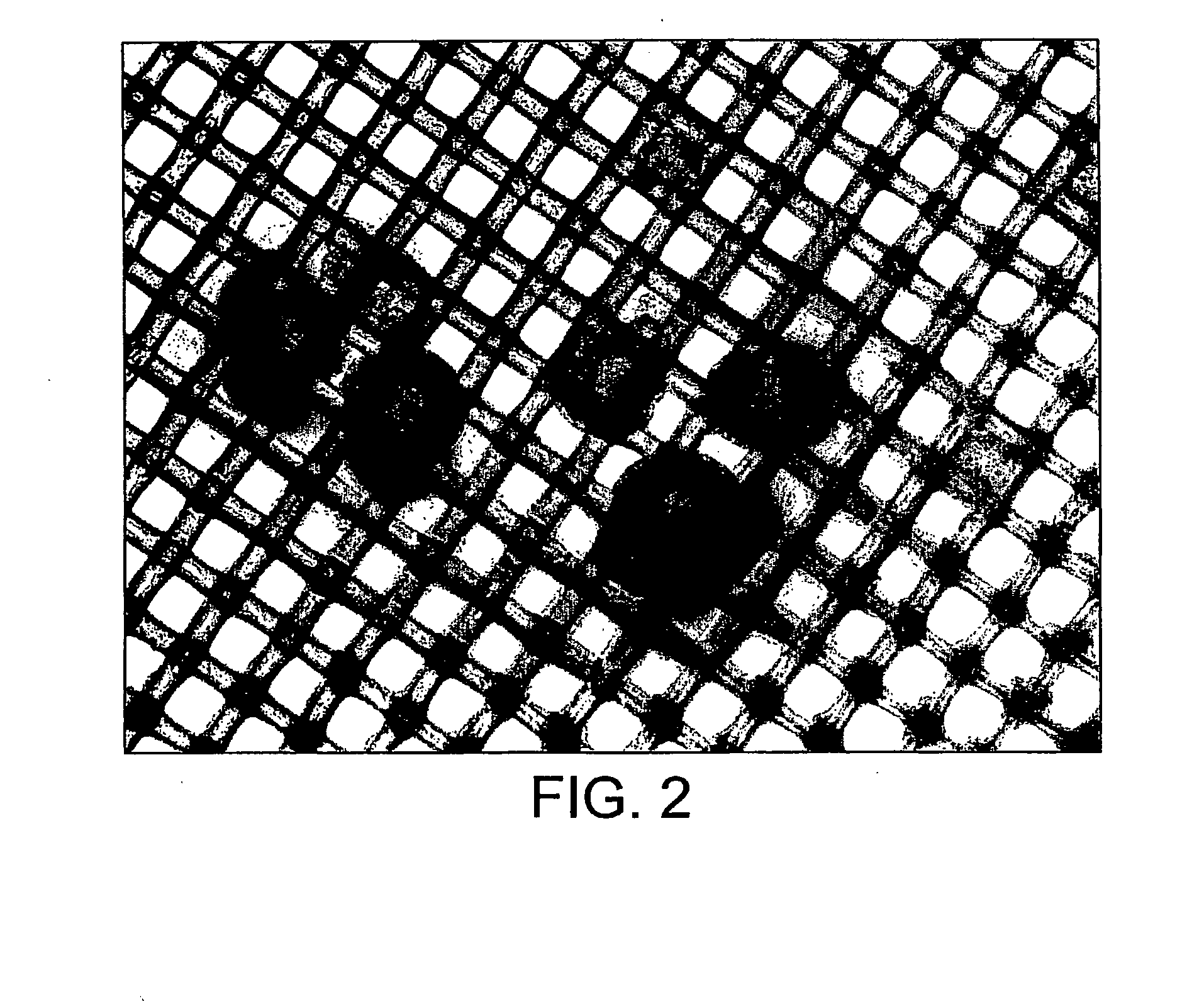Method for determining the cell culture history of a cell unit labelled with more than one type of tag
- Summary
- Abstract
- Description
- Claims
- Application Information
AI Technical Summary
Benefits of technology
Problems solved by technology
Method used
Image
Examples
example 1
Biotin-conjugation of Cultispher-G Microcarriers
[0307]Fluorescent microspheres (tags) from Bangs labs are streptavidin-coated and so the Cultispher-G microcarriers (CSG) are biotinylated in order to facilitate binding of the two during the course of a split-pool experiment. CSG are supplied dry and are hydrated in excess sterile PBS overnight (according to manufacturer's instructions) and autoclaved. They are then rinsed several times in sterile PBS.
example 2
[0308]The biotinylation reagent, Biotinamidohexanoyl-6-amino-hexanoic acid N-hydroxysuccinimide ester (Sigma B3295 10 mg) is used. 10 mg of the reagent is dissolved in 400 μl dimethylformamide (DMF) and added to 5 ml settled volume of hydrated CSG (5 ml settled volume in 50 ml tube) and mixed well by gentle pipetting (0.1% v / v BSA / PBS is pipetted up / down into the pipette tips beforehand to prevent sticking of CSG to the inside surface of the tips).
[0309]The biotinylation reagent is allowed to incubate with the CSG overnight at room temperature before several rinses in sterile PBS to remove excess biotinylation reagent (rinsing is performed in a 50 ml tube with the CSG being allowed to settle between rinses and careful aspiration with a vacuum).
[0310]The biotinylated CSG are now ready for use in an experiment. They are stored under sterile conditions in a known volume of PBS and the concentration in mixed suspension is calculated based on this volume and the dry ...
example 3
Tagging Methods in Wells and Columns
[0311]After the seeding of CSG with ES cells, the fluorescent tags are added to tag each stage in the split-pool matrix. The following method for tagging biotinylated CSG with streptavidin-coated tags is used.
[0312]The experiments are conducted in a 5×5 well (10 cm×10 cm) cell culture dish (each well therefore measures 2 cm×2 cm). Typically, one well will contain 7000 CSG / ES cell complexes.
[0313]The fluorescent tags are added to the well at a known concentration of tags / CSG. The mixture is gently pipetted to mix (using 0.1% BSA / PBS-treated tips to prevent sticking) and then the whole 5×5 dish is tilted to facilitate close contact of the CSG and tags.
[0314]The dish is placed in a 37° C. incubator for approximately 1 hr and then placed flat until the next stage of the split-pool experiment.
PUM
| Property | Measurement | Unit |
|---|---|---|
| Fraction | aaaaa | aaaaa |
| Time | aaaaa | aaaaa |
| Length | aaaaa | aaaaa |
Abstract
Description
Claims
Application Information
 Login to View More
Login to View More - R&D
- Intellectual Property
- Life Sciences
- Materials
- Tech Scout
- Unparalleled Data Quality
- Higher Quality Content
- 60% Fewer Hallucinations
Browse by: Latest US Patents, China's latest patents, Technical Efficacy Thesaurus, Application Domain, Technology Topic, Popular Technical Reports.
© 2025 PatSnap. All rights reserved.Legal|Privacy policy|Modern Slavery Act Transparency Statement|Sitemap|About US| Contact US: help@patsnap.com



